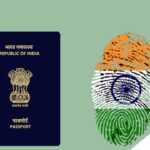Introduction
India’s Constitution carries a vision of unity in diversity. When the Constituent Assembly drafted it, one of the most significant choices was the principle of single citizenship. Unlike the federal system of the United States, where people hold both state and national citizenship, India opted for one. The framers believed that a common citizenship would build national unity, prevent divisions, and strengthen the young democracy. This choice has shaped the way Indian federalism works and continues to impact rights and responsibilities of every citizen today.
The Concept of Single Citizenship
Single citizenship means that every person recognized as an Indian citizen holds the same legal status across the nation. There is no separate category of citizenship at the state level. Whether one lives in Delhi, Kerala, or Nagaland, the same set of rights and duties apply. This ensures equality before law and guarantees that no state can limit or alter a person’s citizenship status. By doing so, the Constitution promotes the idea of one nation and one identity.
Why India Rejected Dual Citizenship
The Constituent Assembly debated deeply on the idea of dual citizenship. Some members raised concerns that federal states, if given separate citizenship rights, could create competing loyalties. India had just gained independence and was still recovering from the trauma of Partition. In such conditions, dual citizenship risked widening divisions. The framers decided that a strong central identity was more important than fragmented loyalties. They wanted to avoid a system where people saw themselves first as citizens of a state and only then as citizens of the country.
Moreover, India’s diversity was already immense, with hundreds of languages, cultures, and religions. Adding dual citizenship to this mix might have encouraged separatist tendencies. The framers instead chose single citizenship to protect the unity and integrity of the Union.
Benefits of Single Citizenship
Single citizenship has played a central role in shaping modern India. It ensures that all Indians enjoy the same rights, regardless of the state they belong to. A person from Rajasthan can work, vote, or settle in Tamil Nadu without needing any separate recognition. This mobility supports national integration and makes sure that India functions as one common market and one political community.
It also simplifies the legal system. Citizens follow one uniform set of citizenship laws under the Constitution and the Citizenship Act of 1955. This avoids conflicts between state and national laws and reduces legal confusion. Moreover, it prevents the possibility of states creating exclusionary practices by limiting certain rights to “their” citizens only.
Another key benefit is political equality. Every citizen has the same set of political rights, including the right to vote and contest elections, no matter where they live. This equality strengthens the foundation of Indian democracy.
Federalism and Single Citizenship
Critics sometimes argue that single citizenship makes India too centralized. After all, federalism usually allows states to carry their own citizenship systems. However, the framers believed India required a different model. They designed a federal structure with a strong center but flexible states. Articles 5 to 11 of the Constitution lay down the rules of citizenship. These provisions place citizenship firmly under the Union, leaving no space for states to create their own categories.
This design shows India’s unique approach to federalism. It combines federal features with a unitary spirit, ensuring that while states enjoy autonomy in many areas, they cannot compromise the unity of the nation.
Single Citizenship in Practice
The success of single citizenship is visible in India’s social and political life. Citizens freely move, work, and settle anywhere in the country. Students can study in universities across states, workers migrate in search of jobs, and entrepreneurs expand businesses without legal barriers. This fluid movement strengthens the economic and cultural bonds between regions.
The principle also played a role in maintaining unity during difficult times. For example, during the linguistic reorganization of states in 1956 and later movements for statehood, citizenship remained unaffected. People could campaign for new states without fear of losing their Indian citizenship. This continuity reassured communities that even as administrative borders changed, their national identity remained the same.
Challenges and Criticisms
Although single citizenship has been successful, it has not been free from criticism. Some argue that it undermines the federal nature of the Constitution by denying states a say in determining who belongs to them. Others point to regional protections like domicile requirements in education or jobs that act as indirect forms of state-level citizenship. For instance, certain states reserve seats in educational institutions or government employment for local residents.
These practices, while controversial, highlight the tension between the constitutional idea of single citizenship and the political demands of states. However, the Supreme Court has often upheld the central principle, ensuring that these state-level measures do not override national citizenship.
Comparing with Other Countries
India’s rejection of dual citizenship becomes clearer when compared to countries like the United States. In the U.S., citizens hold both state and federal citizenship, which gives states considerable control over rights and obligations. In India, such a model could have fueled fragmentation, especially given its history of regional and communal divides. By contrast, single citizenship has given India a common identity that bridges its many diversities.
Questions and Answers
Q1. Why did India adopt single citizenship instead of dual citizenship?
India adopted single citizenship to ensure unity, equality, and integration. The framers feared that dual citizenship would create divided loyalties and encourage separatism.
Q2. What are the advantages of single citizenship in India?
Single citizenship provides equal rights across states, simplifies the legal system, and supports national integration by allowing free movement and settlement.
Q3. Does single citizenship weaken federalism in India?
No, it does not weaken federalism. Instead, it ensures that federalism functions without threatening national unity. States retain autonomy in governance, but citizenship remains under Union control.
Conclusion
The principle of single citizenship stands as one of the strongest pillars of India’s constitutional design. It gave India a unifying identity at a time when divisions threatened to tear the nation apart. By rejecting dual citizenship, the framers chose stability over fragmentation and equality over division. While challenges remain, the system has stood the test of time. It ensures that every Indian, regardless of state or region, belongs equally to the nation. In a democracy as vast and diverse as India, single citizenship continues to be the glue that holds the Union together.
For any specific query call at +91 – 8569843472








